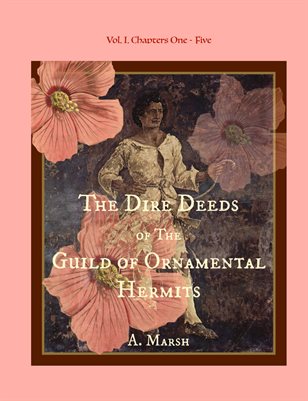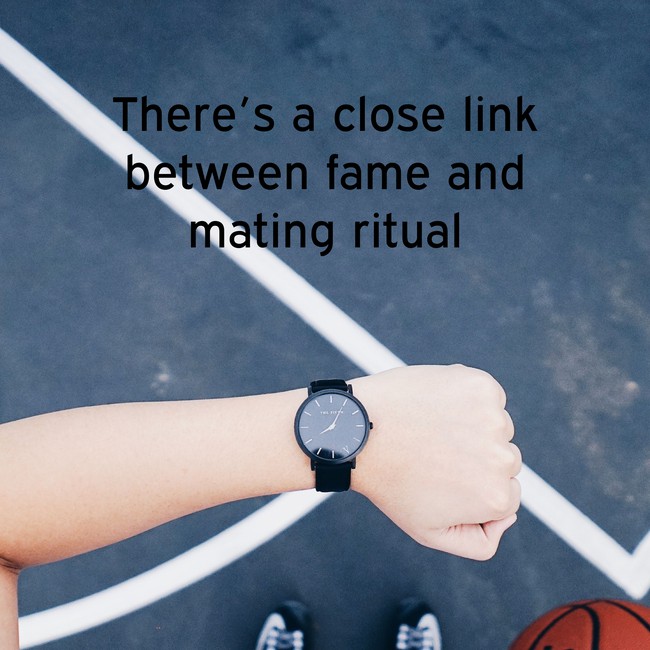Some call it “spectrophilia.” I’d be more likely to call it “entheosex,” but avid explorers of entheogens have already coined that term to mean sex while using psychedelics. As a sexologist and sexuality counselor, I think I’ll be most comfortable using the terms “spectrosexual” and “spectrosexuality.” I believe many people may experience these desires in the context of a full-blown sexual and affectionate orientation rather than as a fetish. That’s my premise–and it’s based on a hunch, not data.

Today’s blog outlines my initial attempts to understand this phenomena in a sexological context: people who say they have sex with spirits and deities (or who desire this), and those who claim committed relationships with such beings. Much as I did when I began to learn about objectum sexuality (Love Among the Objectum Sexuals), I begin by trying to view this phenomena by many different angles, including a sexological lens, and to see what shows up in “the literature” (books, professional journals, etc.) as well as reported “lived experiences.” And of course these kinds of accounts are showing up in pop culture, but I’m going to ignore that for the moment.
Apologies are due to you, dear reader, as most of what I cite below is cisgendered and heterosexual. Am looking for other sources. This is the just first of many blogs on this topic. [Update 8/23/18: Please read this excellent piece about being a god spouse, written by Bat Bruja.]
Let’s start with Alfred Kinsey’s classics, Sexual Behavior in the Human Female (with Pomeroy, Martin, and Gebhard, 1953) and Sexual Behaivor in the Human Male (with Pomeroy and Martin, 1948). In the Female book, I scanned the index and found “psychic masturbation” (not found in Male book) which led me to this text on page 163:
“Some 2 per cent of the females in the sample had reached orgasm by fantasying erotic situations, without tactiley stimulating their genitalia or other parts of their bodies (Table 37). Exceedingly few males are capable of reaching orgasm in this fashion while they are awake, although orgasm from psychic stimulation while asleep is a common enough phenomenon among males.”
The footnote (38) attached to this paragraph gives additional terminology: “idealized coitus,” “mental cohabitation,” “moral or psychic masturbation,” “the mental vulva,” and “erotic day dreaming.” Kinsey et al. lists a number of sources for these terms including pioneering sexologists Iwan Bloch (1903), Havelock Ellis referenced in Albert Moll (1921), Magnus Hirschfeld (1916), and others. Kinsey notes that several of these sources “express the curious and certainly unfounded opinion that this is the ‘most noxious’ of all forms of masturbation.”
So the purported (cis) female ability to have “think gasms” was once thought to be “noxious” by white, (cis) male “experts.” Why are we not surprised? But rather than get hung up on that, let’s say that the interesting thing is that “psychic masturbation” showed up in very early sexological research. Later researchers have also noted this ability to “think off.” In The Science of Orgasm (2006), Barry Komisaruk, Carlos Beyer-Flores, and Beverly Whipple discuss fMRI (imaging) studies of “non-sensory induced orgasms” (pp. 260-261). They found that:
“…in thought-induced orgasms, as in orgasms produced by vaginocervical self-stimulation, the regions of the nucleus accumbens, PVN, hippocampus, and anterior cingulate cortex are activated.” (p. 261).
However, the amygdala “was not activated during thought orgasms” (p. 261).
Previous research into this topic included Whipple, Ogden and Komisaruk (1992) and Komisaruk and Whipple (2005). In the 1992 “thought orgasm” study, “–heart rate, blood pressure, pupil dilation, and pain threshold–approximately doubled during orgasm compared with initial resting baseline.” Bonk author, Mary Roach, also includes an amusing anecdote about a woman who “thinks off” in this TED Talk video.
As an aside, many erotic hypnosis enthusiasts also create and/or experience hands-off “hypno-gasms.” I teach these techniques myself.
Two important points here:
(1) Some human bodies are able to respond with pleasure, including orgasmic pleasure, simply from “thoughts” or psychic stimulation. Is this an evolved capacity? What function does this ability serve (besides sheer pleasure)?
(2) Psychic sexual stimulation and orgasm is most likely to show up in sexological literature in the context of solo sex and fantasy, or as a fetish. Not as god or spirit partner sex, even if there is the presumption that the partner is imaginary.
In Encyclopedia of Unusual Sex Practices (1992) by Brenda Love, we find spectrophilia defined as “either coitus with spirits or arousal from image in mirrors” (p. 312). Spectrophilia is discussed as a fetish often involving incubi and succubi. Many people have at least heard of sexy “attacks” by incubi and succubi spirits and perhaps have learned of the recent research into sleep paralysis (“night terrors”) which appears to explain this kind of phenomena. (Love’s spectrophilia entry predates this research.) Her entry also mentions the Babylonian Lilith, forced confessions of demonic intercourse during witchcraft persecutions, the “Thai Shrinking Penis Syndrome,” and the famous tale of the Virgin Mary and the Christian God (pp. 269-270).
[FYI: Love also has entries for altered state orgasms and near-death experiences (p. 189), as well as astral orgasms–annecdotal accounts of astral projection as a result of orgasm (p. 191), psychic orgasms (p. 192), and tantric orgasms (p. 193).]
Contemporary references to god or spirit sex may be found in books on Western magic, including sex magic books. For example, in Sex, Sorcery, and Spirit: The Secrets of Erotic Magic (2015) by Jason Miller, he discusses spectrophilia and other matters in his chapter called “Raise Your Spirits: Sex for and with Angels, Demons, Gods and Spirits” (pp. 151-167).
Spirit/human intimacy may be found in anthropological literature. An example would be The Polynesian Family System of Ka’u, Hawai’i (1998) by E.S. Craighill Handy and Mary Kawena Pukui, particularly the chapter called “Psychic Phase of the Relationship” and a discussion of “spirit lovers of the night” (kane and wahine o ka po) (pp. 116-159). Such lovers may be beneficial, and may even produce children, or they may be inadvertantly dangerous, sometimes causing human beings to pine away with desire through no fault of their own. Sometimes expert spiritual intervention is sought to sever the relationship and save the human being.
Myths, folklore, and religious traditions from all over the world and many historical periods contain accounts of human/spirit sex and intimacy. With regard to spiritual traditions, some ancient Buddhist and Hindu tantric practices include energetic sexual rites performed with spiritual beings as part of the path to transcendence. People may be asked to imagine themselves as a deity or to imagine a human partner as a deity, or to imagine the deity as a partner. Such practices were learned under guidance, during long years of study. (The above discussion of tantra is vastly oversimplified.)
Writers have often written about sexual relationships with spirits. One of my favorite stories is A.S. Byatt’s The Djinn in the Nightingale’s Eye (1994).
The internet being what it is, of course we can find references to partnered spirit sex and god spousery in blogs, websites, articles, videos, and podcasts. But I’m not incorporating a pop culture discussion in this particular blog.
Two more important points:
(3) Accounts of sexual encounters with gods and spirits have been recounted by human beings in varied cultures and historical periods. Therefore let’s consider that something about this is “real” beyond the types of reports or stories that might be explained by sleep paralysis.
(4) People in many cultures have created and refined practices designed to create and facilitate human/spirit interactions, including sexual ones. People have devoted vast amounts of time and energy to create these practices and traditions. Why?
It’s imporant to remember, however, that human/spirit sex was not always (or perhaps even often) looked upon with favor by religious and secular authorities. In Sex Crimes: From Renaissance to Enlightenment (2002), by William Naphy, we are told of the harsh punishments meted out to suspected witches (male and female) who have been accused of sex with demons (pp. 224-232). Even today we could probably find many instances of persecution–societies and religions which can barely tolerate gay sex are certainly not going to countenance spirit sex, which is even more transgressive as being pretty much undetectable (unless one blogs about it).
As I consider the above, from a sexological view, I have many questions. Here are some of them.
The biggest question:
What emerges for us when we understand (1) that human bodies have measurable orgasmic responses to psychic stimulation and combine this understanding with (2) a knowledge that humanity’s mythic/religious heritage includes a vast array of accounts and traditions of human sexual relationships with spirits, angels, gods, demons, etc.? What are the spiritual and cultural implications, as well as the sexological ones?
Other questions:
Are some people “wired” for a spectrosexual orientation or spectroattraction? Or should this be considered a “capacity?” (I just don’t think it’s a fetish–it’s too full-blown.)
What kinds of behavioral, emotional, and sexual variations may be found within a “spectrosexual” spectrum? I am sure we will find a range that encompasses polya spectrosexuality to mono spectrosexuality to asexual spectroattraction and more, plus ranges in genders and gendered attractions (and non-gendered attractions). We will find experiences ranging from a single encounter to committed relationships, as well as those desiring such encounters or relationships but who have not yet had them.
Will spectrosexuals eventually “come out” as a sexual minority community? (Since I know ecosexuals and objectum sexuals, this seems reasonable to me.) How will individual spectrosexuals and spectroattractors deal with their own coming out processes?
How do god spouses and spectrosexuals/spectroattractors deal with “sharing” a god or spirit?
How do spectrosexuals/spectroattractors navigate their relationships with intimate human partners? How much acceptance do they generally receive from other humans in their lives?
What kinds of discernment criteria, support, and other social structures will emerge as spectrosexuality and spectroattraction become better known?
Are there demographic and cultural factors or emotional and personality factors that are common to spectrosexuals/spectroattractors? Or not?
What sort of distasteful media circuses and pop culture travesties will emerge? What sort of cultural backlashes and oppression may we expect? What’s going to appear that is cringe-worthy (that we haven’t seen already)? How many Ph.D. candidates will do a dissertation on this topic?
For now, that is my initial take on spectrosexuality. Sadly, earlier today I lost most of my first finished draft and have had to reconstruct it all a second time. (That’s what I get, I guess, for my devotion to a trickster god.) I am sure I will be writing more on this subject, as I find it fascinating!
Are you a fellow traveller? Let me know you’re out there. Please “like” and share. Thanks for reading!
####












